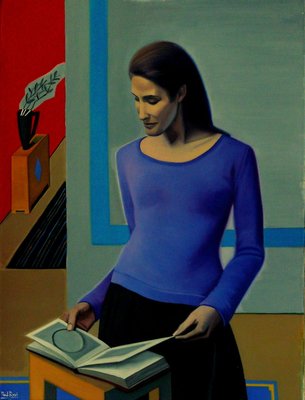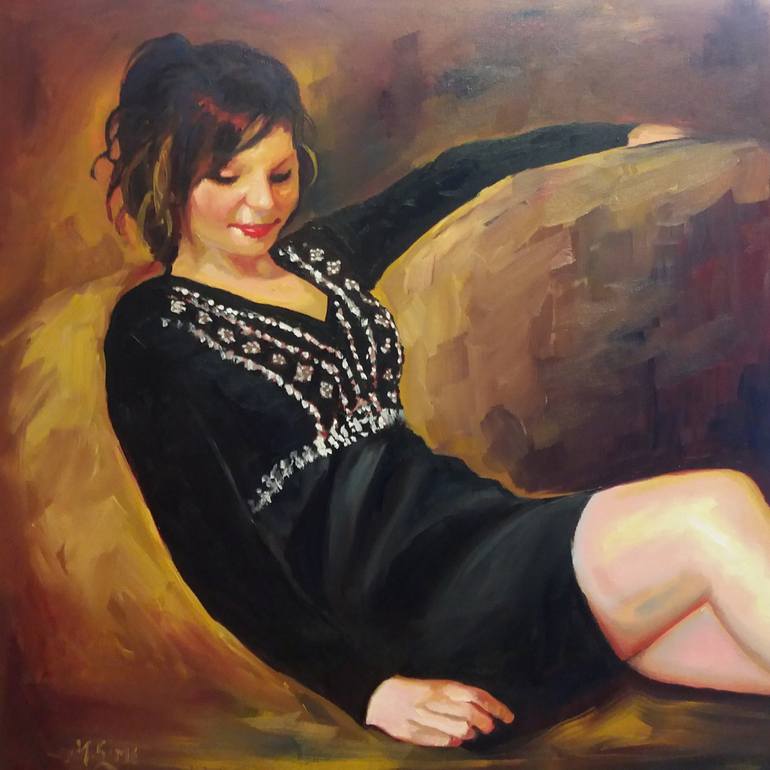The Evolution of Art: A Comprehensive Overview to Figurative Oil Painting
The Evolution of Art: A Comprehensive Overview to Figurative Oil Painting
Blog Article
The Evolution of Metaphorical Oil Paint: Comprehending Its Historical Value and Modern Interpretations
The advancement of metaphorical oil painting offers as an engaging lens via which to take a look at the interaction between creative expression and historical context. Contemporary artists, attracting from this rich heritage, are now reinterpreting the human number in means that challenge typical narratives.
Beginnings of Figurative Oil Paint
The origins of metaphorical oil paint can be mapped back to the early Renaissance in Europe, specifically in the 15th century. This duration marked a considerable separation from the rigid forms and flat depictions particular of medieval art. Musicians started to explore naturalism, highlighting the human figure and its emotional expression. The advancement of oil paint enabled for better depth of shade and detail, enhancing the realism and vibrancy of their work.

In this transformative era, figures were usually depicted within contextually abundant atmospheres, showcasing not only their physical qualities however likewise their mental states. Leaders such as Jan van Eyck and Titian utilized the tool's versatility, utilizing layering methods to attain luminance and structure. This advancement helped with the portrayal of elaborate textiles and the subtleties of skin tones, adding to the growth of portrait and narrative scenes.
In Addition, the Renaissance emphasis on humanism cultivated a gratitude for individuality, which in turn affected artists to produce even more vibrant and relatable numbers - figurative oil painting. As an outcome, metaphorical oil paint became a powerful lorry for narration and psychological involvement, preparing for future imaginative activities and designs
Secret Historical Activities
Considerable historical activities have actually formed the development of figurative oil painting, each contributing unique approaches and strategies that broadened the medium's opportunities. The Renaissance noted a zero hour, highlighting realism and the human form, with musicians like Leonardo da Vinci and Michelangelo pushing the borders of physiological precision and point of view. Following this, the Baroque period brought significant contrasts of light and shadow, exemplified by Caravaggio, that infused spiritual styles with extreme emotionality.
The 19th century introduced Romanticism and Realism, where artists such as Delacroix and Courbet tested timeless perfects, concentrating on private expression and day-to-day life. The development of Impressionism better revolutionized the tool by emphasizing the results of light and color, leading to a departure from conventional depiction.
In the very early 20th century, movements like Expressionism and Cubism redefined figurative painting with abstraction and the expedition of psychological deepness. Each of these activities not only reflected the societal changes of their times however likewise laid the foundation for modern interpretations. The interaction in between these historic activities has actually created a rich tapestry of designs and philosophies, influencing modern musicians in their search of catching the human experience on canvas.
Methods and Materials Evolution

Throughout the Baroque duration, strategies such as chiaroscuro and sfumato arised, improving the emotional resonance of figurative structures. Artists started to trying out lusters and impasto, controling texture and brightness. By the 19th century, technologies like using pre-mixed paints in tubes transformed accessibility, enabling artists to repaint en plein air and capture the short lived impacts of light.
The 20th century witnessed the intro of synthetic pigments and tools, which expanded the combination and changed the uniformity of oil paints. Moreover, the exploration of new application methods, such as scheme blades and brushes of differing stiffness, additional diversified creative expression. Jointly, these advancements show the progressing connection in between materials, strategies, and the creative vision integral in figurative oil painting.

Contemporary Analyses
Contemporary interpretations of metaphorical oil paint show a dynamic discussion between custom and advancement, where artists test established norms and discover varied themes. This advancement shows up in different ways, as contemporary artists blend classical strategies with modern-day principles, often dealing with social, political, and individual narratives.
Lots of specialists attract inspiration reference from historic works, yet they instill their items with contemporary point of views, utilizing the human type as a car for discourse on culture, identification, and sex. Artists progressively try out abstraction, distortion, and multimedias, which permits a broader interpretation of the number and its context.
Furthermore, the usage of vivid color schemes and unusual make-ups often serves to disrupt traditional watching experiences, prompting crucial engagement from audiences. This change in emphasis extends past visual appeals; it mirrors an expanding awareness of the intricacies of human experience in an interconnected world.
As metaphorical oil painting proceeds to develop, it remains a vital tool for discovering the nuances of contemporary life, personifying both a regard for heritage and a commitment to modern idea. The outcome is an abundant tapestry of expression that reverberates with the complexities of the modern-day human condition.
Influence on Modern Art
The impact of figurative oil paint on modern-day art is extensive, as it has actually constantly motivated a myriad of artistic activities and practices throughout the 21st and 20th centuries. From Expressionism to Surrealism and past, the exploration of the human figure has actually remained a main theme, permitting musicians to communicate complex feelings and stories. This emphasis on figurative depiction has actually caused a re-examination of conventional techniques, causing cutting-edge methods that blend realistic look with abstraction.
Additionally, contemporary musicians have welcomed figurative oil painting as a way to deal with political and social concerns, using the tool to test perceptions of gender, identification, and society. The resurgence of rate of interest in figurative job in current years mirrors a hoping for link in an increasingly electronic globe, where human experience and feeling are paramount.
Furthermore, the discussion in between metaphorical oil paint and contemporary art is apparent in the jobs of musicians such as Kehinde Wiley and Jenny Saville, that attract on historical references while instilling their items with modern significance. Inevitably, figurative oil painting proceeds to form and redefine contemporary artistic expression, highlighting its enduring value in the art world.
Final Thought
The evolution of figurative oil painting emphasizes its historic value and flexibility across various imaginative motions. Ultimately, metaphorical oil painting remains an essential tool for checking out the human experience, resonating profoundly in today's electronic landscape.
The advancement of figurative oil paint offers as a compelling lens through which to analyze the interaction between imaginative expression and historic context.Considerable historical movements have actually shaped the evolution of metaphorical oil paint, each contributing special ideologies and strategies that increased the medium's possibilities.As historic movements formed the trajectory of metaphorical oil paint, the materials and methods utilized by musicians Our site have additionally undertaken substantial improvements. figurative oil painting.The influence of metaphorical oil paint on modern-day art is profound, as it has actually consistently inspired a myriad of imaginative movements and practices throughout the 21st and 20th centuries.The development of metaphorical oil paint highlights its historical value and flexibility throughout various artistic movements
Report this page